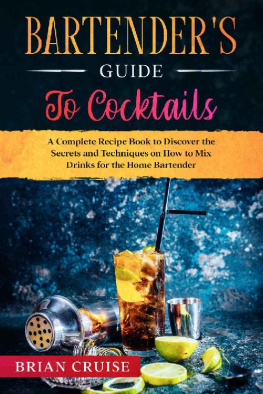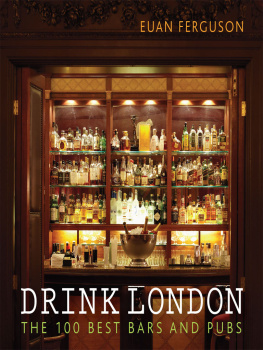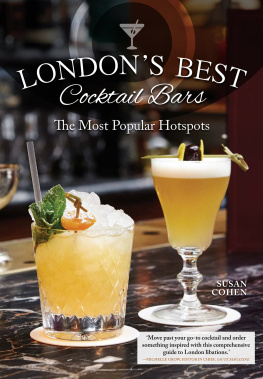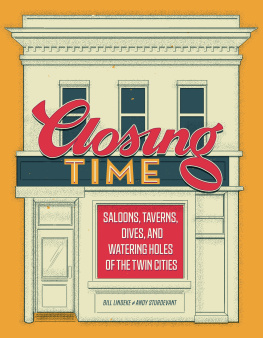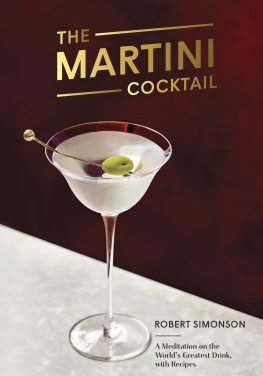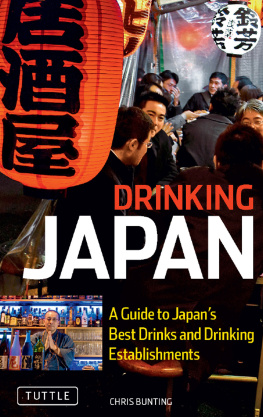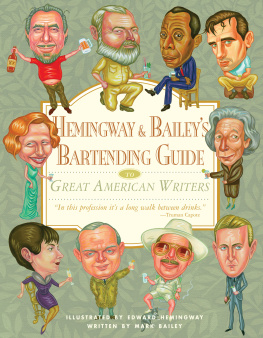
All photography is courtesy of the author except where noted below:
Pages 6, 148, 153: 21 Club; 12, 118, 120: Peter Sylvester; 30, 34, 36: Courtesy of Minetta Tavern; 44, 49: Joseph A. Rosen; 63: Jessica Rosen, Courtesy of Chumleys; 73, 76, 77: The Odeon; 96: A Davis/Shutterstock.com; 115: Courtesy of Chelsea White; 128, 131, 134: Rachel Correra; 138, 141, 143: Courtesy of the Algonquin Hotel; 160, 161, 165: Courtesy of Christopher Dorsey of the Monkey Bar; 166, 168: P.J. Clarkes; 172: Rick Lew; 176: Eugene DeLucie; 178, 182, 185: The Knickerbocker; 187, 188, 191: Courtesy of the St. Regis New York; 194, 201: the Carlyle, a Rosewood Hotel; 210, 212: The Writing Room; 218, 222: Terence Nelson; 232, 234, 235, 236: Bill Potter, courtesy of the New York Distilling Company; 242, 244: Stephanie Cohen; 246: Amy Elizabeth Studio; 250: Joe Lops; 256, 258: LIC Bar, Long Island City, NY 11101; 261: Karl Jacob
Copyright 2017 by Delia Cabe
All rights reserved
For information about permission to reproduce selections from this book, write to Permissions, The Countryman Press, 500 Fifth Avenue, New York, NY 10110
For information about special discounts for bulk purchases, please contact W. W. Norton Special Sales at specialsales@wwnorton.com or 800-233-4830
COVER DESIGN BY:FACEOUT STUDIO, JEFF MILLER
The Countryman Press
www.countrymanpress.com
A division of W. W. Norton & Company, Inc.
500 Fifth Avenue, New York, NY 10110
www.wwnorton.com
978-1-68268-046-9
978-1-68268-047-6 (e-book)
For Rob
Youre the Nick to my Nora

___________
CONTENTS
For one thing, I take New York personally.
I am, in fact, somewhat annoyingly tender about it.
A silver cord ties me tight to my city.
DOROTHY PARKER
My Home Town, McCalls, January 1928
_________
INTRODUCTION
I grew up on the Lower East Side of Manhattan. A lifelong bookworm, I would often walk the streets of New York City imagining the many authors who had lived and written in the apartments I passed. My grade school on Christopher Street in Greenwich Village was located one block from the Lions Head, a celebrated watering hole for writers and journalists. I knew E. E. Cummings, Dawn Powell, Thomas Paine, and Ted White had all lived on Christopher Street at one time or another. Dorothy Parker and I went to Catholic school in the same double brownstone on W. 79th Street in Manhattan, separated by numerous decades. Unlike the class troublemaker Dottie, I thrived in that brownstone, with its dark wood touches and a layout that I could imagine being someones home. Had I been of legal age, I would have toasted Dorothys ghost in my classroom with a tall glass of gin. Unfortunately, the only alcohol allowed was the red wine served at communion during mass in the first-floor chapel.
Once I was old enough, I had to check out the Algonquin Hotel, where the writers and artists of the Round Table met in the 1920s. To this day, the lobby and Blue Room bar, updated in 2012, attract authors and book lovers from the world over. The hotel and its bar are proud of their place in the annals of literature and endeavor to make their standing relevant in the twenty-first century. Often tourists in the know have their pictures taken beneath the painting of the Round Table members, while others are content to curl up with a book in a lobby chair, a Dorothy Parker cocktail at hand. I basked in the indigo glow of the Blue Room, a perpetual twilight atmosphere in which to imbibe a luscious cocktail. Hallowed ground, indeed.
But its not just the glitzy spots that stand out. Ive slipped into McSorleys for the requisite pair of mugs of beer and the walls covered with framed newspaper clippings, photos, and the book jacket from Joseph Mitchells McSorleys Wonderful Saloon. The authors photo shows a gentle, balding man peering through large round glasses. Mitchell seems on the brink of a smile. Kettle of Fish, in the former home of the Lions Head, feels comforting, unpretentious. The 21 is upscale but charming, its ceiling laden with toys, books, and playful memorabilia. You can almost picture Truman Capote, whose biography by George Plimpton dangles above the bar, regaling his table with his many tales.
This book is a collection of those storied bars that have played host to writers and artists for more than a century. A few of the bars spotlighted in this book have been pouring liquor for literary luminaries since Grover Cleveland was president. Yet, while New York City preserves and treasures parts of its past, the city also reinvents itself year after year. While every generation of writers injects the classic haunts with fresh energy, new bars appear on the scene ready to inherit a literary mantle, welcoming contemporary writers and readers into the fold. Watering holes like the Half King, KGB, LIC Bar, and Franklin Park hold reading series showcasing best-selling and emerging authors. Overflowing audiences of book lovers, journalists, authors, and publishing industry types sit during the readings like worshippers in a temple. They return on other days for drinks, conversation, or some reading time. Franklin Parks outdoor patio provides a pocket of tranquility, where patrons lounge and read on a summer afternoon, away from the hectic Brooklyn streets. Gary Shteyngart, who enjoys this bars reading series, however, prefers to drink his vodka and tonic at clandestine downtown bars.
Myriad theories abound as to why writers congregate in bars. They patronize them because they are thirsty. They patronize them because they need a break from the solitary task of writing that novel, essay, magazine story, or poem. They patronize them looking for camaraderie. (And some patronized them far too often.)
The bars authors frequented and still do frequent have buoyed their creativity. Coffee shops may be their so-called third place by day, but these bars are their third place by night. Magazines such as The New Yorker and Saturday Review were conceived over drinks. Walt Whitman penned a few poems in a New York bar in the late nineteenth century. Mostly, he liked to sit back and observe the scene, listening to the cadence of conversations around him. O. Henry wrote his short story The Gift of the Magi at a Gramercy Park bar. Ludwig Bemelmans drafted his childrens book on the back of a menu in that same bar. In a Manhattan bar, Thomas Wolfe discerned the central theme of the novel he was wrestling with when a drinking companion told the North Carolina native that you cant go home again. Edward Albee saw Whos Afraid of Virginia Woolf scrawled in soap on a bathroom mirror in a Greenwich Village bar and was inspired to write a Tony Awardwinning play of the same name. More recently, Jay McInerney chose a Tribeca bar and restaurant for scenes in his novels Bright Lights, Bright City and Bright, Precious Days as recently as 2016.
No doubt, writers turn to these botes for friendship and conviviality because writing is a lonely endeavor. In bars old and new, they socialize, critique each others works in progress, and connect each other to writing and teaching gigs, to residencies, retreats, and conferences, and to other writers, editors, and agents. Thats true now, just as it was way back when.
Robert Sherwood shared an office with Robert Benchley and Dorothy Parker when all three were writing for Vanity Fair. Ever since then, my considered advice to young literary aspirants has been, Merely make sure that you start out in fast company, Sherwood writes. After all, an impromptu luncheon of newspaper and magazine writers and editors, including those witty three, to celebrate Alexander Woollcotts return from World War I gave rise to the Round Table. They had steady writing assignments because of those lunches.
Next page

